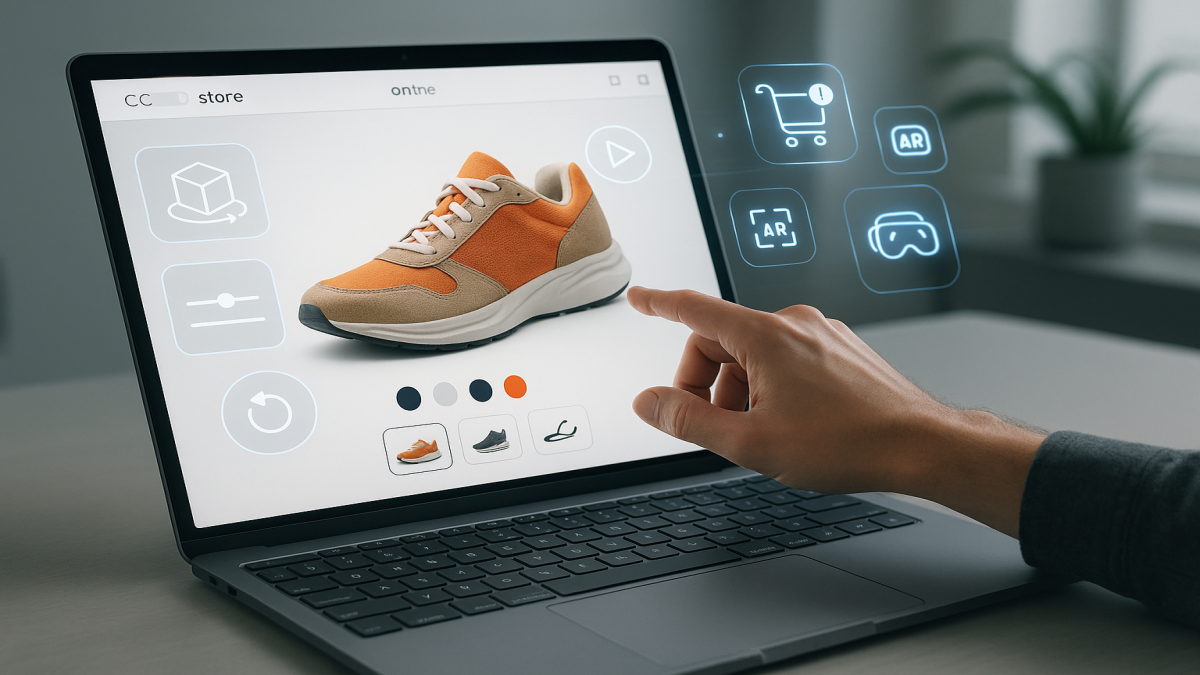Meta Description:
Discover how interactive product visualizations are revolutionizing e-commerce. Learn why 3D models, AR, and immersive experiences are the future of online shopping and how they can boost your digital marketing strategy.
Introduction
In the fast-paced world of digital marketing, staying ahead of the curve is essential for e-commerce success. One of the most transformative trends reshaping the online shopping experience is interactive product visualization. From 3D models to augmented reality (AR), these cutting-edge technologies are not just enhancing how products are displayed—they are redefining how customers engage, decide, and buy. In this blog post, we’ll explore what interactive product visualizations are, why they matter, and how you can leverage them to future-proof your e-commerce business.
What Are Interactive Product Visualizations?
Interactive product visualizations refer to digital tools that allow customers to view, manipulate, and interact with products online in ways that mimic or even surpass in-store experiences. Unlike static images or basic videos, these visualizations use technologies like 3D modeling, AR, and virtual reality (VR) to provide a dynamic, hands-on feel.
Key Types of Interactive Visualizations:
- 3D Product Models: Customers can rotate, zoom, and inspect products from every angle.
- Augmented Reality (AR): Shoppers can “place” products in their real environment using their smartphone or tablet.
- Virtual Try-Ons: Especially popular in fashion and eyewear, users can see how products look on themselves.
- Product Customizers: Buyers can personalize colors, materials, and features in real time.
Why Are Interactive Product Visualizations the Future of E-commerce?
1. Enhanced Customer Engagement
Interactive visualizations captivate users, keeping them on your site longer. The ability to interact with products increases curiosity and builds a stronger emotional connection, which can lead to higher conversion rates.
2. Improved Purchase Confidence
One of the biggest barriers to online shopping is uncertainty—customers can’t touch or try products before buying. Interactive tools bridge this gap by providing a more realistic sense of size, texture, and fit, reducing doubts and returns.
3. Higher Conversion Rates
Studies show that e-commerce sites using 3D and AR product views see significant increases in conversion rates. When shoppers can visualize products in their own space or customize them, they’re more likely to complete a purchase.
4. Reduced Return Rates
By giving customers a clearer understanding of what they’re buying, interactive visualizations help set accurate expectations. This leads to fewer surprises and, ultimately, fewer returns—a win for both retailers and customers.
5. Competitive Advantage
As more brands adopt these technologies, interactive product visualization is quickly becoming a standard. Early adopters can differentiate themselves, attract tech-savvy shoppers, and position their brand as innovative and customer-focused.
How to Implement Interactive Product Visualizations in Your E-commerce Store
1. Choose the Right Technology
- 3D Modeling Platforms: Tools like Sketchfab, Threekit, and Shopify’s 3D Warehouse make it easy to integrate 3D models into your store.
- AR Integration: Platforms such as ARKit (Apple), ARCore (Google), and WebAR allow you to offer AR experiences directly from your website or app.
- Customization Tools: Solutions like Zakeke and Customily enable real-time product customization.
2. Optimize for Mobile
Most shoppers browse and buy on mobile devices. Ensure your interactive visualizations are mobile-friendly, load quickly, and don’t require extra downloads.
3. Focus on User Experience
Keep interfaces intuitive. Offer clear instructions, loading indicators, and easy navigation to prevent frustration and abandonment.
4. Leverage Analytics
Track how users interact with your visualizations. Use this data to refine your offerings, improve engagement, and identify which products benefit most from interactive features.
5. Promote Your Interactive Features
Highlight your interactive capabilities in marketing campaigns, product pages, and social media. Educate customers on how to use these tools to maximize their value.
SEO Best Practices for Interactive Product Visualizations
- Use Descriptive Alt Text: Ensure all 3D models and images have SEO-friendly alt text for better search visibility.
- Optimize Page Speed: Compress 3D assets and use lazy loading to maintain fast load times.
- Create Supporting Content: Write blog posts, how-to guides, and FAQs about your interactive features to attract organic traffic.
- Schema Markup: Implement product schema to help search engines understand your interactive content.
- Mobile Optimization: Google prioritizes mobile-friendly sites, so test your visualizations on various devices.
Real-World Examples
- IKEA Place: Allows users to visualize furniture in their home using AR.
- Nike By You: Lets customers design and preview custom sneakers in 3D.
- Warby Parker: Offers virtual try-ons for glasses using AR.
These brands have seen increased engagement, higher sales, and improved customer satisfaction by embracing interactive product visualization.
Conclusion
Interactive product visualizations are not just a trend—they are the future of e-commerce. By offering immersive, engaging, and informative shopping experiences, you can boost customer confidence, increase conversions, and set your brand apart in a crowded digital marketplace. As technology continues to evolve, integrating 3D, AR, and customization tools into your e-commerce strategy will be essential for staying competitive and meeting the expectations of modern shoppers.




